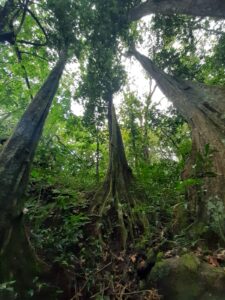“Mindfulness in its pure form is essentially enhanced reality orientation. It involves involves specific forms of attentional & awareness practices that are designed to release our natural intelligence & our potential for experiential learning in the moment“
 Dear Integral Meditators,
Dear Integral Meditators,
This weeks article essentially points out how mindfulness and productivity go together to help you enjoy your life and realize your goals, or to go from coping to thriving, I hope you enjoy it!
In the spirit of enhanced reality orientation,
Toby
Mindfulness, productivity, self-regulation & the 85% rule
Basic reality orientation – Coping well enough to perform
In order to hold down a job, or maintain a harmonious social and family existence we all need a degree of mindfulness. We all need to be taking social cues, focusing on our work, and making appropriate adjustments well enough to do these things acceptably. Failure to meet our reality with this basic level of mindfulness would lead to:
- Inability to hold down a job
- Lack of stable relationships
- Continuous instability within the family unit
- Being considered unstable and even ‘insane’ by the conventional measures by which it is assessed in society
Enhanced reality orientation – Moving from coping to thriving
Mindfulness in its pure form is essentially enhanced reality orientation. It involves specific forms of attentional & awareness practices that are designed to release our natural intelligence & our potential for experiential learning in the moment.
- By paying attention in a high-quality manner to our work we can be more successful at it without necessarily working harder (aka working smarter)
- In our leadership and relationship life we can create high functioning interactions that lead to great teams and stable friendships
- We can learn to pick up on inner cues and signals from our body-mind, and learn to regulate our energy in a way where we feel well and thriving not just in the short term, but in the medium and long term.
With the students that attend my mindfulness sessions at INSEAD, one of the things that I am trying to teach them is how to arrive at 50years old (my age) from where they are (30+) in a way where they feel they have energy, enthusiasm and are ready to leap into the next life-project. This is as opposed to what they see in may of their seniors who are exhausted, stressed out and cynical. To do this they (and you!) need to self-regulate effectively. Below is a simple exercise around the 85% rule that is one example of this.
The 85% rule
This rule basically states that, if you are 85% exhausted, and then you stop and rest, your body-mind will recover reasonably fast and you can then continue where you left off. If you go substantially beyond the 85%, you move your energy levels move more and more ‘into the red’. Moving beyond 85% means that you really are exhausted, and it takes a much longer time to recover effectively from that type or level of exhaustion. So, in this practice the object of mindful self-regulation is to not go beyond 85% exhausted in any given activity in your work or life. By doing this you can actually become more productive in the medium to long term and in a way that is sustainable and enjoyable. The key here is:
- To know what the signs that you are approaching the 85% marker are
- To recognize and accept those signs
- To stop what you are doing and focus on the (enjoyable) discipline of recovery
- Recognizing the signs of recovery, and getting back to it with enthusiasm!
If you can do this then this simple way of orienting yourself mindfully around the reality of your energy levels gives you one of the keys to mindful thriving and productivity.
What are your own personal inner signs for points 1-4 above? How can you start orienting yourself around these signs mindfully today and begin plotting your own path of mindful thriving?
© Toby Ouvry 2022, you are welcome to use or share this article, but please cite Toby as the source and include reference to his website www.tobyouvry.com
 Sat & Sun 22nd/23rd October – Shamanic meditation workshop retreatLearn how to practice the fundamentals of the most ancient meditation tradition on the planet in a clear, practical and concise manner, and understand its relevance and value to you and the challenges that you face in your life.
Sat & Sun 22nd/23rd October – Shamanic meditation workshop retreatLearn how to practice the fundamentals of the most ancient meditation tradition on the planet in a clear, practical and concise manner, and understand its relevance and value to you and the challenges that you face in your life.
The workshop will give an overview and introduce some simple but profound shamanic practices on day one, with a deeper dive into Shamanic meditation practices on day two…read full details
Are you looking a coach who can help you to:
- Meet the challenges, stress and changes that you face in a more effective and mindful way
- Become happier within yourself, in your relationships and at work
- Be actively accountable for finding a sense of balance/well-being in your life and fulfilling your personal potential?
- Guide you to find and operate from a deeper sense of meaning, motivation and connectivity in your life?
All upcoming classes and workshops at IMA:
Ongoing – Weekly Tuesday, Wednesday Online class schedule
Ongoing on Wednesday’s, 7.30-8.30pm – Wednesday Meditation for stress transformation and positive energy with Toby (Bukit Timah)
Ongoing on Tuesday evenings, 7.30-8.30pm – Tuesday Meditation for stress transformation and positive energy with Toby (East Coast)
Starts Tues 16th /Weds 17th August – An Adventure in Consciousness – The What, Why & How of integral & engaged meditation practice
Saturday October 8th, 9.30-12noon – Zen deep-dive mini-retreat
Sat & Sun 22nd/23rd October – Shamanic meditation workshop retreat
Integral Meditation Asia
Online Courses * 1:1 Coaching * Books * Live Workshops * Corporate Mindfulness Training *Life-Coaching * Meditation Technology

 Dear Integral Meditators,
Dear Integral Meditators,










